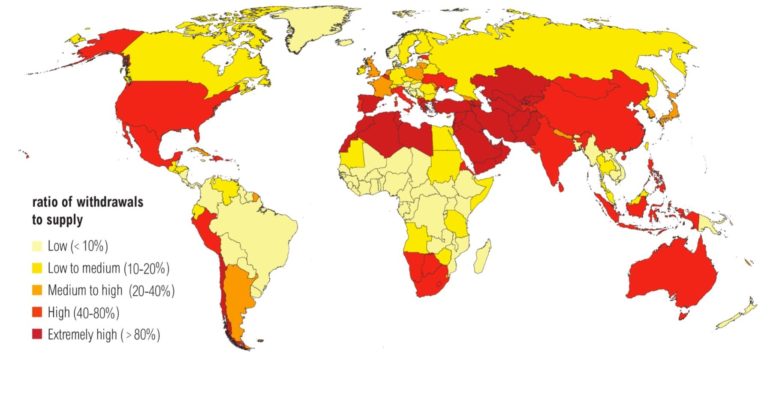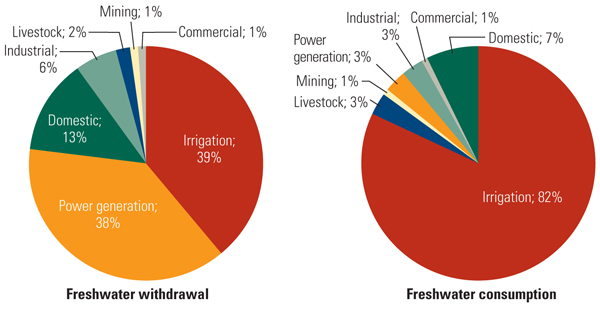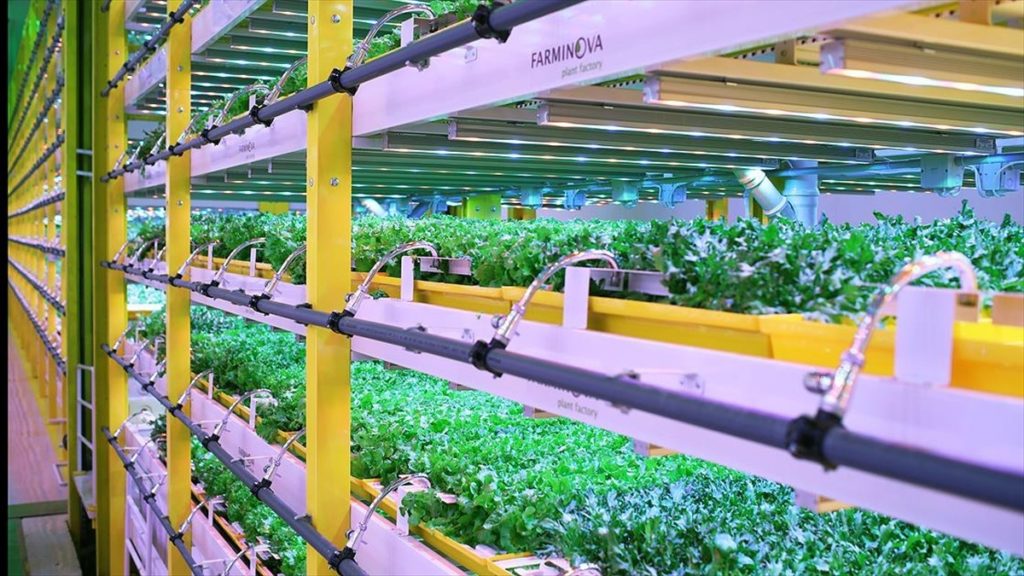Water scarcity is increasingly becoming a problem not only for developing countries but also for the advanced economies. The continuation of ‘business-as-usual’ practices in agriculture has only exacerbated this problem and increased pressure on global resources. In light of the water scarcity crisis, we look this week at some of the ways indoor farming improves water efficiency while also producing a higher crop yield.
In popular culture, water scarcity is often seen as a fall out of environmental change, for example, sudden droughts that drastically reduce supplies. It is important to note, however, that water scarcity can also be caused by gradual changes like population growth. As urbanization continues, alleviating stress on municipal water sources continues to be a challenge. When approaching these issues, contemporary agriculture is often seen to employ a ‘rear-view’ mirror approach as traditional methodology fails to maximize efficiency. If farmers are overly reliant on consistent water supplies to grow their crops, their businesses can become vulnerable to both environmental change and increased population demand. It is essential therefore that these practices are regularly revised to ensure that agricultural infrastructure can withstand shortages in the water supply.
Water consumption in modern agriculture is already disproportionately high. The World Economic Forum notes that almost ninety percent of all water taken up from rivers, lakes, and groundwater is put to use in farming. And so, many readers may be surprised therefore to learn that they actually ‘eat’ more water per year through food consumption than they drink! Single lettuce, for example, on average needs as much as forty glasses of rainwater and nine glasses of irrigation water to grow full size. Similarly, a banana can require up to four-hundred and eighteen glasses of rainwater plus sixty glasses of irrigation water to grow. This adds up to staggering amounts of water used each year as even when rainwater is included, irrigation water must be additionally provided to facilitate plant growth.
Why is it that conventional agriculture requires such a high quantity of water? One reason is that conventional agriculture struggles to collect the water lost as part of the plant’s life cycle. Evaporation and transpiration both contribute to plants having poor water retention. This means water is effectively ‘lost’ to the atmosphere as resources are removed from the current water cycle and can not be reused. Another reason is that field agriculture can waste water by not sufficiently directing it at the plants. Water intended for the crops can end up being absorbed by soil and other plants in the area or leaving the area as ‘run-off’ water. This wastage ultimately culminates in constant pressure not only being placed on farmers to constantly source water, but also puts a strain on municipal resources through a failure to conserve resources effectively.
In light of these shortcomings, indoor farming has been seen as a more efficient and cost-effective business model for crop growth. Indoor farming can utilize technological feedback using AI applications which ensures water is only applied to the plants when it is absolutely necessary. Modernized data capture means that there is less chance of plants being watered excessively and farmers can see more clearly when exactly their plants need watering. This also allows water to be conserved in buffer tanks and other storage until it is needed which reduces pressure on municipal water supplies over time.
Indoor farming is also able to direct water more directly to the plant. In a circular system, rather than losing water as ‘run-off’, all resources are received directly by the plant through various filtration systems. Indoor farms are also able to maintain high water quality by introducing checks into the process. Quality can be checked at several points in the production cycle via UV filtration, electrical conductivity, and pH testing. This is critical as it ensures increased demand on water supplies does not lead to a decline in quality. Indoor farming, therefore, protects against water contamination while also pinpointing the most effective use of resources.
Most importantly, indoor farming increases the chance of water being retained through controlled environment conditions. Air cooling systems, for example, which are used inside vertical farms can condensate water from each cultivation platform and put this water back into the system. Less water is lost to the atmosphere through evaporation and less pressure is put on farmers to constantly source new water supplies. Implementing these measures poses more of a challenge to outdoor farming where conditions can not be easily controlled.
Indoor farming offers a wide variety of solutions to the problem of water scarcity and constant innovation in methods is helping to improve efficiency. It is important that the agricultural sector continues to review these conventional methods to ensure that excessive and unnecessary strain is not placed on water supplies. This process of continuous reflection will help guide the agricultural industry towards achieving more responsible and sustainable practices globally.
Author: Emily Markham




Comments are closed.